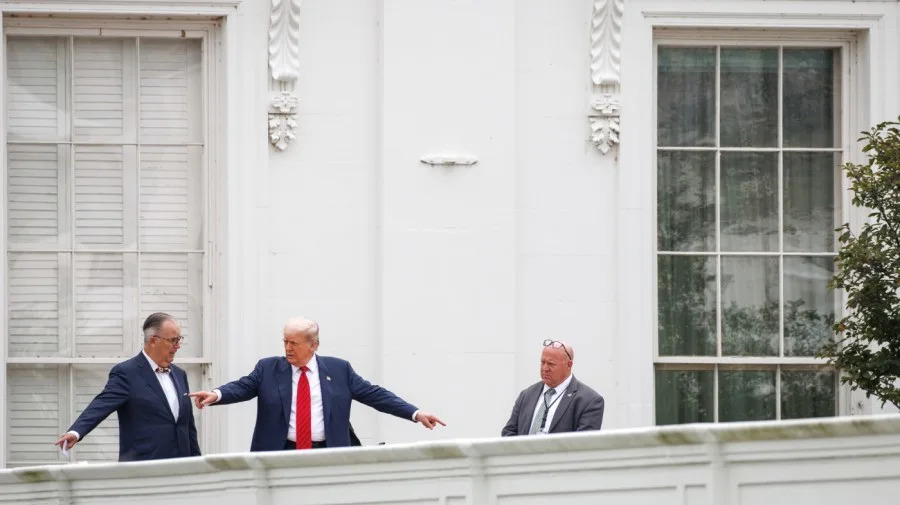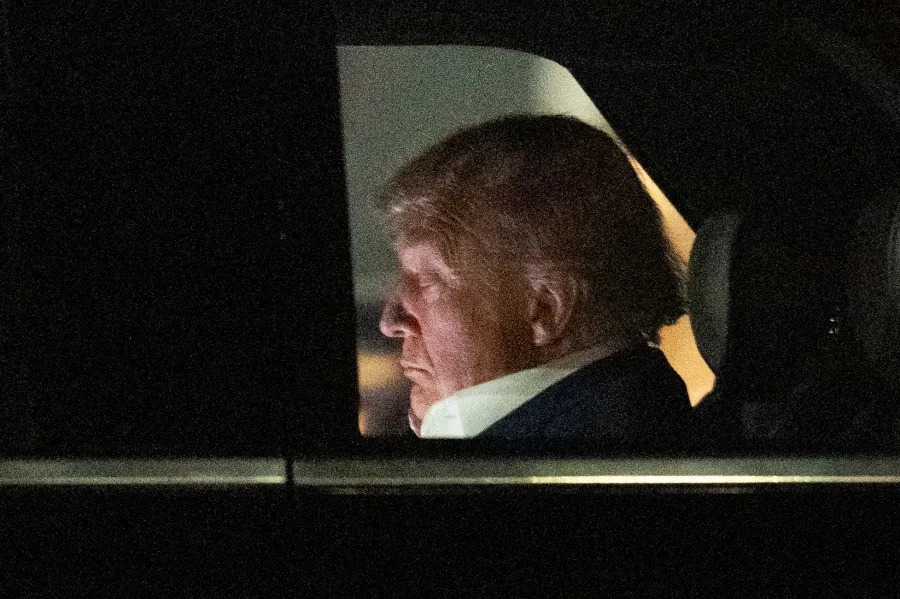
A football field, including the end zones, measures over 57,000 square feet. President Trump’s proposed state ballroom would be 90,000 square feet.
Is there any conceivable justification for having a room more than a third larger than the size of a football field to host state dinners?
That the president would want such a grand structure is no surprise. Trump’s personal and real estate aesthetic has always leaned toward the bigger and the flashier.
But tacking on a structure of this size to the White House is probably not only unnecessary — the plan runs counter to the underlying logic of how George Washington and the founding generation thought about the presidential grounds and the residence.
When Pierre-Charles L’Enfant proposed his initial plan for what would become the District of Columbia, he outlined a footprint for what he labeled the “President’s Palace” that was four times the size of the house that was actually built.
Presumably, the structure L’Enfant had in mind would not only be the president’s home but also house the offices of the executive branch.
Washington scrapped L’Enfant’s plan for the President’s Palace. Instead, he insisted on holding a competition to build a home. This is not to deny that he wanted as impressive a residence as possible, yet, as always, Washington was conscious of the limits imposed by the country’s republican sensibilities.
For Washington, the key point is that the building would be a home, not a palace. The president was the only constitutional officer given a house.
The reason being, unlike Congress or the Supreme Court, chief executives are never in recess or off duty. Theirs is an endless job, and so their home is their office.
Washington’s plan called for a presidential residence that, although quite large, would still be recognizable as a home. The executive department building would be nearby but not formally connected to the president’s house.
Although the residence would have rooms large enough for a president to hold public levees and formal dinners, the sense was always that one was entering the president’s home and not some outsized public event space.
Even today, formal state dinners in the White House retain something of the intimacy of being invited into a home.
Of course, this is not the first time thought has been given to adding significant new structures to the White House. As the centennial of the residence approached in 1900, plans were afoot to add massive, ornate wings to the house.
If built, the overall impression would have been more of a state capitol than an executive’s residence.
In the end, though, sensible heads prevailed, with more modest east and west wings added to give new office space for the president’s staff without compromising the centrality of the White House itself.
Trump is rushing to start construction as early as next month, with the hope to have the building complete by the end of his term in office. Obviously, he wants this as a legacy that will remain well after he is gone.
However, the White House is too important a symbol of the unique republican character of the American executive not to think through whether the proposed hall befits that sensibility and whether there are better alternatives than the one being put forward.
If there is a need for a larger hall to hold state dinners, one should ask whether the hall President Trump proposed goes beyond what is necessary. And, if such a grand hall is in fact necessary, should it sit on White House grounds?
An alternative would be to find a location relatively close to the White House and build a freestanding building there. One could tailor such a structure to even more adequately meet the security and logistical needs required for hosting such large-scale events.
Americans dodged a bullet back at the turn of the 20th century when proposals were put forward to build grand, imperial-style structures to house the president and staff. A new ballroom far larger than a football field has that same imperial air about it.
Even Teddy Roosevelt, the would-be imperialist president, knew better than to go down that road.
Gary J. Schmitt is a senior fellow at the American Enterprise Institute.
Copyright 2025 Nexstar Media, Inc. All rights reserved. This material may not be published, broadcast, rewritten, or redistributed.
For the latest news, weather, sports, and streaming video, head to The Hill.








Comments